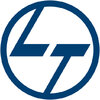Filter interviews by
J.Kumar CRTG JV Safety Officer Interview Questions and Answers
J.Kumar CRTG JV Safety Officer Interview Experiences
1 interview found
I applied via Referral and was interviewed before Aug 2021. There was 1 interview round.
(4 Questions)
- Q1. Classification Of Fire
- Ans.
Fires are classified based on the type of fuel involved.
Class A fires involve ordinary combustibles like wood, paper, and cloth.
Class B fires involve flammable liquids like gasoline and oil.
Class C fires involve electrical equipment like appliances and wiring.
Class D fires involve combustible metals like magnesium and titanium.
Class K fires involve cooking oils and fats.
Each class of fire requires a different type of e...
- Q2. Causes Of Electrical Fire
- Ans.
Electrical fires can be caused by various factors such as faulty wiring, overloaded circuits, and electrical equipment malfunction.
Faulty wiring
Overloaded circuits
Electrical equipment malfunction
Poor maintenance
Lightning strikes
Power surges
Human error
Improper use of electrical equipment
- Q3. Lifting Work Procedure
- Ans.
Lifting work procedure involves proper planning, equipment, and techniques to prevent injuries.
Assess the weight and size of the load before lifting
Use appropriate lifting equipment such as cranes, hoists, or forklifts
Ensure proper body mechanics and lifting techniques are used
Avoid twisting or bending while lifting
Use team lifting techniques for heavy loads
Provide training and education on safe lifting practices
Regula...
- Q4. Explain Working At Height
Interview Preparation Tips
- Height Work
- Hot Work
- Lifting Work
- Excavation Work
- Confine Space Work
- General Work
Top trending discussions






Interview questions from similar companies

I applied via Naukri.com and was interviewed before Aug 2020. There were 3 interview rounds.
Interview Questionnaire
2 Questions
- Q1. Intro, safety officer roles and responsibilities
- Q2. Co gas limit
- Ans.
The CO gas limit is the maximum allowable concentration of carbon monoxide in the air.
The CO gas limit is set by regulatory agencies to protect human health and safety.
The limit varies depending on the location and type of facility.
For example, the Occupational Safety and Health Administration (OSHA) has set a permissible exposure limit (PEL) of 50 parts per million (ppm) for an 8-hour workday.
In residential homes, the...
Interview Preparation Tips

I applied via Naukri.com and was interviewed in Dec 2017. There were 4 interview rounds.
Interview Questionnaire
3 Questions
- Q1. Tell me about your self
- Ans.
Experienced safety officer with a background in industrial safety protocols and emergency response procedures.
Over 5 years of experience in implementing safety measures in industrial settings
Proficient in conducting safety audits and inspections to ensure compliance with regulations
Skilled in developing and implementing safety training programs for employees
Strong knowledge of emergency response protocols and procedure...
- Q2. Duties of safety Officer
- Ans.
Safety Officers are responsible for ensuring the safety of employees in the workplace by implementing safety protocols and procedures.
Develop and implement safety policies and procedures
Conduct regular safety inspections and audits
Investigate accidents and incidents to determine root causes
Provide safety training to employees
Ensure compliance with safety regulations and standards
Maintain safety records and reports
- Q3. Working improvement
Interview Preparation Tips
Experience: Written test
General Tips: Expended
Skills: Self-Awareness
Duration: <1 week

Safety Officer Interview Questions & Answers
Larsen & Toubro Limitedposted on 12 Jun 2020
Interview Questionnaire
2 Questions
- Q1. About work experience. i.e HIRA,SOP,
- Q2. Basis knowledge.

Safety Officer Interview Questions & Answers
Megha Engineering & Infrastructuresposted on 19 Jun 2021
I applied via Walk-in and was interviewed in Dec 2020. There was 1 interview round.
Interview Questionnaire
1 Question
- Q1. 1 Tell me about your self 2 Project work 3 some basic topics related to safety 4 C.V. basic topics
Interview Preparation Tips

Interview Questionnaire
3 Questions
- Q1. What's Safety policy ?
- Ans.
Safety policy is a set of guidelines and procedures designed to ensure the safety of employees and prevent accidents in the workplace.
Safety policy outlines the responsibilities of employees and management in maintaining a safe work environment.
It includes procedures for identifying and reporting hazards, conducting safety training, and responding to emergencies.
Examples of safety policies include wearing personal prot...
- Q2. What's Height work ?
- Q3. What's Emergency plan ?
- Ans.
Emergency plan is a set of procedures and guidelines to be followed in case of an emergency or disaster.
It outlines the roles and responsibilities of individuals and teams during an emergency
It includes evacuation procedures, communication protocols, and emergency contacts
It should be regularly reviewed and updated to ensure its effectiveness
Examples include fire evacuation plans, severe weather plans, and active shoot

Safety Officer Interview Questions & Answers
Shapoorji Pallonji Groupposted on 2 Nov 2021
I applied via Referral and was interviewed before Nov 2020. There was 1 interview round.
Interview Questionnaire
3 Questions
- Q1. About my Self
- Q2. Height work safety & Control measures
- Ans.
Height work safety involves implementing control measures to prevent falls and injuries.
Conducting a risk assessment before starting any work at height
Providing appropriate training and equipment for workers
Implementing a fall protection plan
Regularly inspecting equipment and ensuring it is in good condition
Establishing clear communication and emergency procedures
Examples of control measures include guardrails, safety ...
- Q3. Engineering control, legal control , administrative control, ppe
Interview Preparation Tips

Safety Officer Interview Questions & Answers
Shapoorji Pallonji Groupposted on 2 Nov 2021
I applied via Referral and was interviewed before Nov 2020. There was 1 interview round.
Interview Questionnaire
2 Questions
- Q1. Height work safety &Control measures
- Q2. Administrative control, Engineering control, legal control
Interview Preparation Tips

Safety Officer Interview Questions & Answers
Shapoorji Pallonji Groupposted on 26 Dec 2021
I applied via Walk-in and was interviewed in Nov 2021. There was 1 interview round.
Interview Questionnaire
21 Questions
- Q1. HIRA full from
- Ans.
HIRA stands for Hazard Identification and Risk Assessment.
HIRA is a systematic process of identifying potential hazards and analyzing the associated risks.
It involves identifying the hazards, assessing the risks, and implementing control measures to mitigate the risks.
HIRA is an important tool for safety officers to ensure the safety of employees and the workplace.
Examples of hazards that can be identified through HIRA...
- Q2. ISO stander
- Q3. IBOSh full from
- Ans.
I'm sorry, but the question is not clear and seems to be incomplete.
Please provide more context or rephrase the question.
Without proper information, I cannot provide a relevant answer.
Kindly clarify the question so that I can assist you better.
- Q4. Safety belt lanyard length
- Q5. NEbosh full from
- Q6. Audit report
- Q7. Job related
- Q8. Crane load capacity
- Q9. LMR full from
- Ans.
LMR full from refers to a situation where the Land Mobile Radio system is at maximum capacity.
LMR full from means that the Land Mobile Radio system is unable to accommodate any more users or communications.
This can occur when all available channels or frequencies are in use.
It may result in communication delays or the inability to establish new connections.
LMR full from can impact the effectiveness of emergency respons...
- Q10. Work to permit
- Q11. EHS meeting
- Q12. Road safety
- Q13. Electrical safety
- Q14. Fire hazard
- Q15. What is safety
- Ans.
Safety is the state of being protected from harm, danger, or injury.
Safety involves identifying and assessing potential hazards
It requires implementing measures to prevent or mitigate those hazards
It involves training and educating individuals on safe practices
Safety is a continuous process that requires ongoing evaluation and improvement
Examples of safety measures include wearing personal protective equipment, followi...
- Q16. Shut down work
- Ans.
Shutting down work is a crucial safety measure to prevent accidents and ensure the well-being of workers.
Shutting down work may be necessary in case of an imminent danger or hazard that cannot be immediately controlled.
It is important to have clear protocols and procedures in place for shutting down work in different scenarios.
Examples of situations that may require work shutdown include gas leaks, chemical spills, str...
- Q17. CSR activities
- Q18. Foundation work relate
- Q19. Severity rate
- Q20. What is accident
- Ans.
An accident is an unexpected and unintentional event that causes harm or damage.
Accidents can happen in any setting, including workplaces, homes, and on the road.
They can result in physical injuries, property damage, or both.
Accidents can be caused by human error, equipment failure, or environmental factors.
Examples of accidents include slips and falls, car crashes, and machinery malfunctions.
- Q21. What is incident
- Ans.
An incident is an unplanned event that results in injury, damage, or loss.
Incidents can occur in any workplace or environment
They can range from minor incidents such as slips and falls to major incidents such as explosions or fires
Incidents should be reported and investigated to prevent future occurrences
Proper safety measures and training can help prevent incidents from happening
Interview Preparation Tips

Interview Questionnaire
9 Questions
- Q1. What is job profile on site area
- Q2. Accident investigation analysis and reporting. responsibilities of work site safety health safety environment emergency procedure sate planing cleaning and House keeping first aid fire fighting system pers...
- Q3. What is safety equipment. Use for site
- Ans.
Safety equipment refers to protective gear and devices used on a site to prevent accidents and injuries.
Safety equipment includes items such as hard hats, safety goggles, gloves, and safety harnesses.
These items are used to protect workers from hazards like falling objects, chemical splashes, and electrical shocks.
Other examples of safety equipment are earplugs, respirators, safety shoes, and high-visibility clothing.
S...
- Q4. What is nature work on site
- Ans.
Nature work on site refers to the natural elements and environmental factors that affect the safety of workers and the site.
Includes weather conditions such as rain, wind, and extreme temperatures
Environmental hazards such as wildlife, poisonous plants, and natural disasters
Terrain and landscape features such as steep slopes, bodies of water, and rocky terrain
May also include the impact of nearby construction or develo...
- Q5. Who is responsible for worker and equipment.
- Q6. What is confined space
- Ans.
Confined space is an area with limited entry and exit points, not designed for continuous occupancy.
Examples include tanks, silos, sewers, and tunnels.
Hazards in confined spaces include lack of oxygen, toxic gases, and fire/explosion risks.
Proper training and equipment are necessary for safe entry and work in confined spaces.
- Q7. What is hot work
- Ans.
Hot work refers to any activity that involves open flames, sparks, or heat sources that could potentially ignite flammable materials.
Examples of hot work include welding, cutting, brazing, soldering, and grinding.
Hot work must be performed in a designated area that has been cleared of flammable materials.
Before hot work begins, a permit must be obtained and a fire watch must be present to monitor the area for any signs...
- Q8. What is cold worker
- Ans.
A cold worker is a person who works with metal without using heat.
Cold workers use techniques like cutting, bending, and shaping metal without heating it up.
Examples of cold working include hammering, rolling, and drawing metal.
Cold working is often used to create intricate designs or shapes in metal.
Cold workers must be skilled in using tools like hammers, pliers, and saws to manipulate metal.
Cold working is often use...
- Q9. What is work permit
- Ans.
A work permit is a document that authorizes a person to perform a specific job or task in a designated area.
Work permits are used to ensure that work is carried out safely and in compliance with regulations.
They are typically issued by a supervisor or manager and must be obtained before work can begin.
Examples of work permits include hot work permits, confined space entry permits, and excavation permits.
The permit will...
J.Kumar CRTG JV Interview FAQs
Tell us how to improve this page.
J.Kumar CRTG JV Interviews By Designations
Interview Questions for Popular Designations
- Safety Supervisor Interview Questions
- Senior Safety Officer Interview Questions
- Fire & Safety Officer Interview Questions
- Safety Engineer Interview Questions
- Safety Manager Interview Questions
- Drug Safety Associate Interview Questions
- Safety Supervisor, Safety Officer Interview Questions
- Safety Executive Interview Questions
- Show more
Safety Officer Interview Questions from Similar Companies
J.Kumar CRTG JV Safety Officer Reviews and Ratings
based on 1 review
Rating in categories
|
Civil Site Engineer
16
salaries
| ₹2.4 L/yr - ₹5.2 L/yr |
|
Junior Engineer Civil
15
salaries
| ₹2 L/yr - ₹6 L/yr |
|
Civil Engineer
9
salaries
| ₹3.1 L/yr - ₹6.2 L/yr |
|
Mechanical Engineer
8
salaries
| ₹4.2 L/yr - ₹8.4 L/yr |
|
Junior Engineer
8
salaries
| ₹1.7 L/yr - ₹4 L/yr |

Larsen & Toubro Limited

L&T Construction

Tata Projects

Megha Engineering & Infrastructures
- Home >
- Interviews >
- J.Kumar CRTG JV Interview Questions >
- J.Kumar CRTG JV Safety Officer Interview Questions










